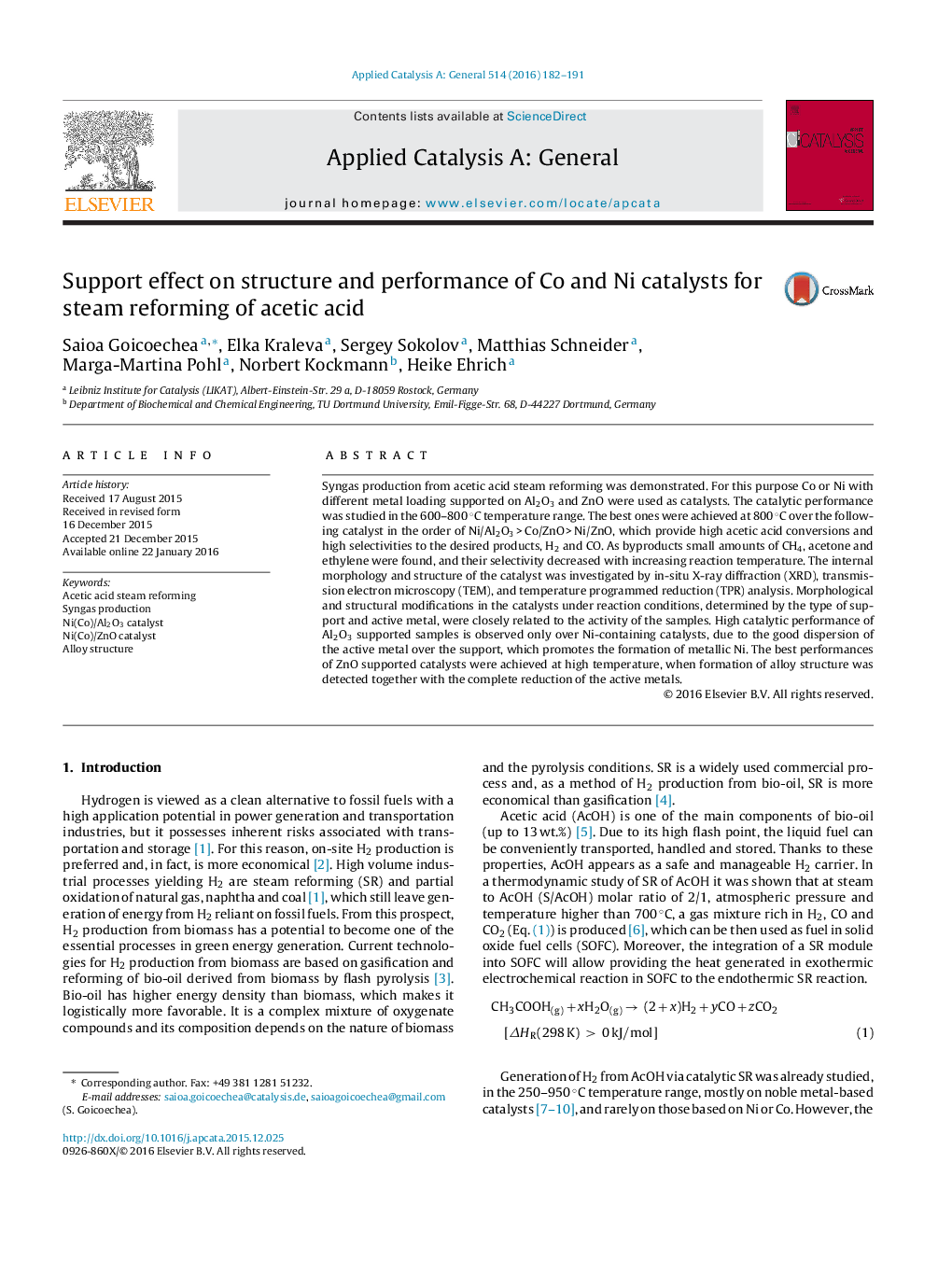| Article ID | Journal | Published Year | Pages | File Type |
|---|---|---|---|---|
| 38954 | Applied Catalysis A: General | 2016 | 10 Pages |
•Concentrated acetic acid solution (60 vol.%) can be totally converted to syngas via steam reforming.•At high temperature (800 °C) the active phases are built in the catalyst.•CoxZn1-x and NixZny alloy structures and metallic Co and Ni have shown to be active for steam reforming of acetic acid.•The morphology and structure of the catalysts is determined by the nature of the used support.
Syngas production from acetic acid steam reforming was demonstrated. For this purpose Co or Ni with different metal loading supported on Al2O3 and ZnO were used as catalysts. The catalytic performance was studied in the 600–800 °C temperature range. The best ones were achieved at 800 °C over the following catalyst in the order of Ni/Al2O3 > Co/ZnO > Ni/ZnO, which provide high acetic acid conversions and high selectivities to the desired products, H2 and CO. As byproducts small amounts of CH4, acetone and ethylene were found, and their selectivity decreased with increasing reaction temperature. The internal morphology and structure of the catalyst was investigated by in-situ X-ray diffraction (XRD), transmission electron microscopy (TEM), and temperature programmed reduction (TPR) analysis. Morphological and structural modifications in the catalysts under reaction conditions, determined by the type of support and active metal, were closely related to the activity of the samples. High catalytic performance of Al2O3 supported samples is observed only over Ni-containing catalysts, due to the good dispersion of the active metal over the support, which promotes the formation of metallic Ni. The best performances of ZnO supported catalysts were achieved at high temperature, when formation of alloy structure was detected together with the complete reduction of the active metals.
Graphical abstractFigure optionsDownload full-size imageDownload high-quality image (143 K)Download as PowerPoint slide
